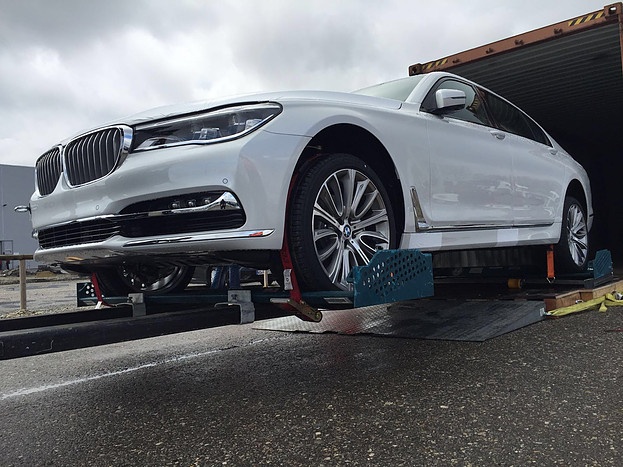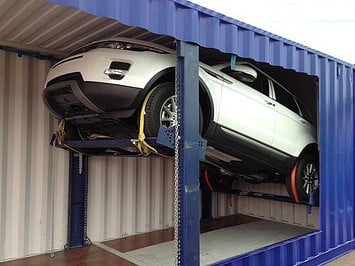
The available options for transporting vehicles really depend upon the journey. The key variables are cost and time, and the potentials are: ship, train, barge, and road transporter. More often than not, a combination of these is required. In this post, the spotlight is directed at the process of getting a fleet of vehicles from manufacturer to showroom, exploring the options that are available.
Getting From A To B: The Analogue Method
Here is a classic example of moving cars from Valencia in Spain to Seoul in South Korea. It’s a typical route that is used by Ford, and this is what is involved:
- Use a road transporter to take the cars from Valencia to the nearest deep-water port at Bilbao
- Board a RORO to cross to the Eastern Seaboard
- Transfer to a Caribbean-suitable vessel, and head to Panama
- Transfer to low berth barge to traverse the Panama Canal
- Transfer to an ocean-going RORO to cross the Pacific
- Take a road transporter or train to Seoul
The whole six-step process can take around two months. During those months, the six transfers present multiple opportunities for delay, damage, and human error. Driving in and out of storage takes time, and there is always a risk of damage during the times spent exposed these car parks. The situation takes on the aura of farce when it is taken into account that the fact that this high number of transfers is necessitated by one simple flaw in the system: the RORO ship.
ROROs require deep water. As such, the majority of docks and several shipping lanes are closed to them. Companies are therefore left with the costly and risky task of filling in all of the missing details with the help of trains, trucks, and imagination.
The Container Solution
Everybody else is, of course, using those great envelopes of the sea: shipping containers. Each container ship carries an average of 200,000 containers per year, travels the equivalent of two-thirds the distance to the moon, and transports around $5.4 billion of cargo. There are about 11,000 such ships, each of which can be crewed by a team of just 25. In more ways than one, it is a superhuman industry.
The secret is in the simplicity. Like life-sized Lego, containers can be neatly stacked, stored, shifted, and transferred, with minimal fuss. The time to get from A to B is radically reduced. Moreover, a product can get from factory to showroom with the safety-seal intact. These are the container perks that most industries take for granted.
And Speaking Of Safety…
Once it is acknowledged that container shipping is a viable option, the only area of consideration is on how well the product is protected whilst inside the container. Traditionally, that has been a problem. Single-use wooden racks are a poor solution for transporting valuable vehicles via sea. This is not just because disposable racks are an expensive, labour-intensive, and risky option.
All of those points are valid.
However, the question is more one of ensuring that the forces generated by waves and weather are absorbed in such a way that they never reach the vehicle. RORO options do not always consider this, as this nightmare-inducing video of crumpled BMWs shows. New steel-frame racking is not only infinitely reusable, it keeps vehicles snug and secure. Steel racking increases the capacity of a container, and therefore also its stability. The material absorbs lateral forces, meaning that the car feels very little whilst on its global voyage.
Given that containers are already the safest way to transport cargo, proper racking technology simply adds an extra layer of security.
From Factory To Showroom
In our globalised world, cars have often travelled thousands of miles before they even reach the showroom. Each of those miles may be equally as perilous as the tarmac they will later traverse. The best way of getting a car to the market will likely depend upon many factors. However, traditional methodologies have taken RORO as an inevitable component. Thanks to research and development, that is no longer the case. If getting your vehicles from factory to showroom sometimes feels like travelling to the moon, it might be time to think about hopping on the rocket ship of the seas and exploring the option of container transport.















